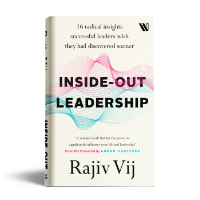
Photo by Kai
“The task of leadership is not to put greatness into humanity, but to elicit it, for the greatness is already there.” ~ John Buchan
One of the top challenges that leaders face today is related to creating a highly engaged workforce. We all know that a highly engaged workforce not only helps nurture a happier work environment, but also means better business and leads to higher performance results. Moreover, it’s expensive to have disengaged staff – unengaged workers are estimated to cost their organizations billions of dollars annually.
What builds employee engagement?
Coaching style works
I have previously talked about how when leaders employ a ‘coaching-style’ of leadership, it significantly supports the process of creating higher employee engagement. Coaching style focuses on self-directed learning, by relying on the other person’s self-awareness and their sense of self-responsibility.
It effectively helps employees feel autonomous (the employees drive the agenda of the discussions not the boss), learn and grow (through self-discovery rather than being directed), feel valued (coaching is a non-judgmental conversation, of equals), and empowered (by discovering their own solutions) – thereby helping them become highly engaged.
Another unique and supportive perspective
I recently came across a short video, by Dan Pink, which provides a unique, and yet a supportive, perspective to creating meaningful employee engagement. His video led me to his latest book, Drive, that’s revealing about what really motivates us.
He makes the point that money is not an effective motivator for people who are involved in jobs that require reasonable cognitive skills. In fact, he argues that the traditional carrot and stick approach has the risk of negatively impacting such employees’ ability to come up with most effective and creative solutions. Although, he agrees that money does matter in a limited way in that employers need to pay employees enough to take the issue of money off the table.
Instead, he highlights three specific elements that he believes make for deeper engagement for any individual, and specifically for employees. These are autonomy, mastery and purpose. While these are self-explanatory, here’s a brief summary of his thoughts.
Autonomy
He relates autonomy to facilitating employees towards self-directed learning and giving them space to do their jobs, learn and grow – as against the traditional approach of ‘managing’ them and their time. He provides evidence of 3M, Google, and Best Buy, among others, in how they create a work culture that supports this.
Google allows its employees to have one day out of the week (equivalent of twenty percent of their time) to work on projects and ideas of their choice. Even though these are not necessarily related to what the organization is working on then, activities of this day are a significant source of Google’s new offering in a typical year. Similarly, through its Results Only Work Environment (ROWE), Best Buy allows its employees to work wherever and however they choose; as long as they achieve specific agreed goals.
Self-directed work is satisfying and provides a sense of freedom for the employees. They are in a better control of their time and can attend to many more things in their life that they otherwise miss out on (for example, their child’s ballet performance). The increased flexibility on work timings also allows such employers to draw on a wider pool of talent, some of who may be otherwise lost to the conventional work setting.
Mastery
Mastery relates to humans’ need to challenge themselves, constantly improve and contribute. It doesn’t matter whether it’s at work or in their personal pursuits, people want to learn, grow and get better with time. This provides a sense of personal accomplishment and fulfillment.
Creating a work environment where employees are constantly learning and developing in their field supports their sense of mastery. Pursuit of mastery is one of the biggest sources of engagement for everyone, including employees. This gets employees totally absorbed in what they are doing and no wonder they then produce better results.
Purpose
Finally, he talks about the importance of purpose (something I have been writing about regularly). When employees can work towards a larger purpose, that the organization is aspiring towards, their motivation levels are higher than when money is the only motivation.
The sense of purpose connects them to something larger than themselves and provides higher meaning to their work and life. A strong purpose also provides an anchor during the vicissitudes of personal life and corporate fortunes.
The Video
Here’s the video, very creatively illustrated by Dan that beautifully captures the essence of his ideas. Hope you enjoy!
Endnote
The underlying premise for these three factors is that when individuals are given the space for being self-directed and are empowered enough to be guided by intrinsic motivation, they deliver better results in the longer-term. Further, when these factors are brought together, people are much better engaged and happier in their roles and are much less likely to move to another opportunity for monetary benefits alone.
Finally, the same principles of creating conditions, for autonomy, mastery and purpose to flourish, can also be applied in our lives to other aspects, like parenting and education.
Related Search Terms:
employee engagement /employee engagement initiatives /employee engagement programs /how to improve employee engagement











 This New Year: Change The Conversation With Your Inner Child
This New Year: Change The Conversation With Your Inner Child Reinventing Yourself In VUCA Times
Reinventing Yourself In VUCA Times Finding Your Thermal…
Finding Your Thermal… Alter Your Relationship With Disagreements
Alter Your Relationship With Disagreements Thriving In An Alternate Second Career
Thriving In An Alternate Second Career